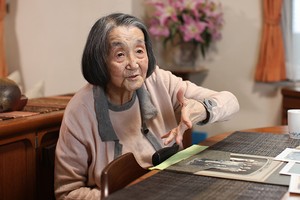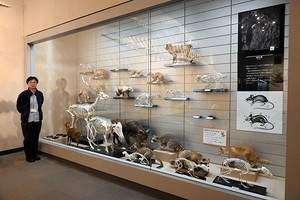By KENICHIRO SHINO/ Staff Writer
April 10, 2025 at 18:25 JST
Replacing the age-old human evaluator, Fujitsu Ltd. has launched an ultrasonic inspection device that uses artificial intelligence to determine the fat content of frozen albacore tuna.
The new technology aims to bring consistency and speed to a process that has traditionally relied on sampling and human inspection.
The fat content, or marbling, of tuna plays a critical role in determining its market value.
Traditionally, tuna evaluators had to slice and thaw the tail end of a fish to assess its quality—an approach prone to subjective judgment and limited by the availability of skilled assessors.
In response to these challenges, Fujitsu began joint research with Tokai University in 2022.
Their new non-destructive method uses ultrasonic waves from four angles to analyze the internal structure of frozen tuna.
The reflected waveforms are processed by an AI program, allowing the system to assess fat content with greater accuracy than human evaluation.
Machinery manufacturer Ishida Tech helped the project team turn its ideas into a product.
During a demonstration of the device on April 9, ultrasound waves were applied to tuna placed on a conveyor belt. The system instantly determined the fat content, displaying results such as “highly marbled” or “low fat.”
While traditional visual inspection typically takes one minute, this device can complete the assessment in as little as 12 seconds.
The automation of this process enables all the tuna in a haul to be inspected—a time-consuming operation previously considered impractical.
The product is scheduled to go on sale in June, with an estimated price of 30 million to 35 million yen ($204,000 to 238,000).
Fujitsu plans to enhance the device to support the inspection of additional fish species, such as yellowfin tuna, bigeye tuna and bonito.
The company also aims to improve the system’s capabilities to assess the fish’s freshness and texture in addition to its fat content.




















A peek through the music industry’s curtain at the producers who harnessed social media to help their idols go global.
A series based on diplomatic documents declassified by Japan’s Foreign Ministry
Here is a collection of first-hand accounts by “hibakusha” atomic bomb survivors.
Cooking experts, chefs and others involved in the field of food introduce their special recipes intertwined with their paths in life.
A series about Japanese-Americans and their memories of World War II